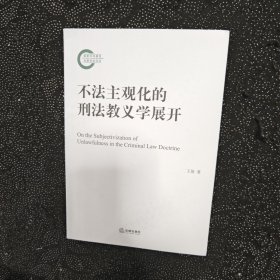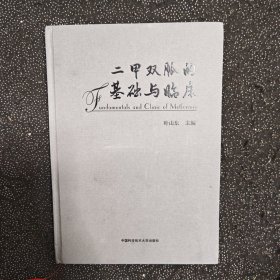
实用线性代数(图解版)
¥ 107 九五品
仅1件
湖北武汉
认证卖家担保交易快速发货售后保障
作者[美]Gerald、[美]Dianne Hansford 著;李红玲 译
出版社机械工业出版社
出版时间2014-10
版次1
装帧平装
货号飞
上书时间2024-09-28
- 在售商品 暂无
- 平均发货时间 17小时
- 好评率 暂无
- 最新上架
商品详情
- 品相描述:九五品
图书标准信息
- 作者 [美]Gerald、[美]Dianne Hansford 著;李红玲 译
- 出版社 机械工业出版社
- 出版时间 2014-10
- 版次 1
- ISBN 9787111473343
- 定价 56.00元
- 装帧 平装
- 开本 16开
- 纸张 胶版纸
- 页数 440页
- 丛书 国外优秀数学教材系列
- 【内容简介】
- 本书区别于以往线性代数的书籍,内容新颖,编排独特,作者以几何视角讲述线性代数,通过二维平面和三维空间中的例子解释线性代数中的各种概念和性质。本书强调直观性以及知识点的背景,结合计算机中各种图形的变换来理解线性变换,注重可读性的同时突出数学的基本思想,将直观图形与数学证明进行了巧妙的结合。作者在书籍侧边空白处手绘200余幅示意图给出了相关概念的解释,更好的帮助读者理解。本书可供非数学类专业的学生及数学爱好者使用,亦可作为数学专业学生和教师的参考用书。
- 【作者简介】
-
杰拉德·法林(Gerald Farin),1979年于布伦瑞克大学获博士学位,著有"Curves and Surfaces for CAGD" (5th ed.), "NURBS" (2nd ed.)。同时他还兼任《计算机图形设计》主编。
- 【目录】
-
笛卡儿的发现 1 第1章
1.1 二维平面中局部坐标与整体坐标的互化 2
1.2 整体坐标到局部坐标的转化 6
1.3 三维空间中局部坐标与整体坐标的互化 8
1.4 单位框外一点坐标的转化 9
1.5 建立坐标系 10
1.6 习题 12
无处不在:二维平面中的点与向量 13 第2章
2.1 点与向量的坐标及运算 14
2.2 点与向量的区别 16
2.3 向量场 17
2.4 向量的长度 18
2.5 点的组合 21
2.6 线性无关 24
2.7 标量积 24
2.8 正交投影 28
2.9 不等式 29
2.10 习题 30
排列起来:二维平面上的直线 33 第3章
3.1 直线的定义 34
3.2 直线的参数方程 35
3.3 直线的隐式方程 37
3.4 直线的显式方程 40
3.5 参数方程与隐式方程的互化 41
3.6 点到直线的距离 43
3.7 点在直线上的投影 47
3.8 相遇的地方:直线相交的计算 48
3.9 习题 54
改变形状:二维平面上的线性映射 57 第4章
4.1 倾斜的目标框 58
4.2 矩阵形式 59
4.3 矩阵的计算性质 61
4.4 图形放缩 63
4.5 图形反射 65
4.6 图形旋转 68
4.7 图形切变 69
4.8 图形投影 71
4.9 投影的核 73
4.10 面积与线性映射:行列式 74
4.11 线性映射的复合 77
4.12 矩阵乘法的更多性质 81
4.13 矩阵运算的更多性质 83
4.14 习题 84
2×2线性方程组 87 第5章
5.1 再议倾斜的目标框 88
5.2 矩阵形式 89
5.3 直接求解法:克拉默法则 90
5.4 高斯消元法 91
5.5 取消映射:逆矩阵 93
5.6 无解方程组 99
5.7 欠定方程组 100
5.8 齐次方程组 100
5.9 数值应用:主元法 102
5.10 用矩阵定义映射 104
5.11 习题 104
在周围移动:二维平面上的仿射映射 107 第6章
6.1 坐标变换 108
6.2 仿射映射与线性映射 110
6.3 平移 111
6.4 更多常见的仿射映射 112
6.5 从三角形映射到三角形 114
6.6 仿射映射的复合 116
6.7 习题 120
特征 123 第7章
7.1 固定方向 124
7.2 特征值 125
7.3 特征向量 127
7.4 特殊情形 129
7.5 对称矩阵的几何图形 132
7.6 重复映射 135
7.7 映射的条件数 137
7.8 习题 138
剖分:三角 141 第8章
8.1 重心坐标 142
8.2 仿射不变性 144
8.3 几个特殊点 145
8.4 二维平面上的三角剖分 148
8.5 数据结构 149
8.6 点的位置 150
8.7 三维空间中的三角剖分 151
8.8 习题 153
圆锥曲线 155 第9章
9.1 常见的圆锥曲线 156
9.2 圆锥曲线类型的判定 160
9.3 圆锥曲线位置的判定 162
9.4 习题 163
三维空间中的几何 165 第10章
10.1 从二维到三维 166
10.2 向量积 168
10.3 直线 172
10.4 平面 173
10.5 应用:光与影 177
10.6 标量三重积 180
10.7 线性空间 181
10.8 习题 183
三维空间中的相交 185 第11章
11.1 点与平面的距离 186
11.2 两直线间的距离 187
11.3 直线与平面相交 189
11.4 直线与三角形相交 191
11.5 光在平面上的反射 191
11.6 三个平面相交 193
11.7 两个平面相交 194
11.8 建立正交坐标系 195
11.9 习题 197
三维空间中的线性映射 199 第12章
12.1 矩阵与线性映射 200
12.2 图形放缩 202
12.3 图形反射 204
12.4 图形切变 204
12.5 图形投影 207
12.6 图形旋转 209
12.7 体积与线性映射:行列式 213
12.8 线性映射的组合 216
12.9 更多的矩阵性质 218
12.10 逆矩阵 219
12.11 习题 221
三维空间中的仿射映射 223 第13章
13.1 仿射映射 224
13.2 平移 225
13.3 四面体的映射 225
13.4 投影 229
13.5 齐次坐标与透视映射 232
13.6 习题 238
一般线性方程组 241 第14章
14.1 问题的引入 242
14.2 高斯消元求解法 244
14.3 行列式 250
14.4 超定方程组 253
14.5 逆矩阵 256
14.6 矩阵的LU分解 258
14.7 习题 262
一般线性空间 265 第15章
15.1 基本性质 266
15.2 线性映射 268
15.3 内积 271
15.4 格拉姆-施密特正交化方法 271
15.5 高维特征问题 272
15.6 空间一览 274
15.7 习题 276
数值方法 279 第16章
16.1 线性方程组的另一种解法:豪斯霍尔德法 280
16.2 向量的范数与序列 285
16.3 方程组的迭代解法:高斯-雅可比法与高斯-赛德尔法 287
16.4 求特征值:幂法 290
16.5 习题 294
直线组团来袭:折线和多边形 297 第17章
17.1 折线 298
17.2 多边形 299
17.3 凸性 300
17.4 多边形的类别 301
17.5 不常见的多边形 302
17.6 转向角与分支数 304
17.7 面积 305
17.8 验证共面问题 309
17.9 验证点与多边形的位置问题 310
17.10 习题 313
曲线 315 第18章
18.1 应用:参数曲线 316
18.2 贝齐尔曲线的性质 321
18.3 矩阵形式 323
18.4 导数 324
18.5 合成曲线 326
18.6 平面曲线的几何 327
18.7 沿曲线移动 329
18.8 习题 331
后记教程 333 附录A
A.1 来个例子热身一下 333
A.2 复习 336
A.3 仿射映射 338
A.4 变量 339
A.5 环 340
A.6 CTM 341
部分解答 343 附录 B
词汇表 367
参考文献 371
索引 373
Contents
Preface
Descartes’ Discovery 1 Chapter 1
1.1 Local and Global Coordinates: 2D 2
1.2 Going from Global to Local 6
1.3 Local and Global Coordinates: 3D 8
1.4 Stepping Outside the Box 9
1.5 Creating Coordinates 10
1.6 Exercises 12
Here and There: Points and Vectors in 2D 13 Chapter 2
2.1 Points and Vectors 14
2.2 What’s the Difference 16
2.3 Vector Fields 17
2.4 Length of a Vector 18
2.5 Combining Points 21
2.6 Independence 24
2.7 Dot Product 24
2.8 Orthogonal Projections 28
2.9 Inequalities 29
2.10 Exercises 30
Lining Up: 2D Lines 33 Chapter 3
3.1 Defining a Line 34
3.2 Parametric Equation of a Line 35
3.3 Implicit Equation of a Line 37
3.4 Explicit Equation of a Line 40
3.5 Converting Between Parametric and Implicit Equations 41
3.6 Distance of a Point to a Line 43
3.7 The Foot of a Point 47
3.8 A Meeting Place: Computing Intersections 48
3.9 Exercises 54
Changing Shapes: Linear Maps in 2D 57 Chapter 4
4.1 Skew Target Boxes 58
4.2 The Matrix Form 59
4.3 More about Matrices 61
4.4 Scalings 63
4.5 Reflections 65
4.6 Rotations 68
4.7 Shears 69
4.8 Projections 71
4.9 The Kernel of a Projection 73
4.10 Areas and Linear Maps: Determinants 74
4.11 Composing Linear Maps 77
4.12 More on Matrix Multiplication 81
4.13 Working with Matrices 83
4.14 Exercises 84
2×2 Linear Systems 87 Chapter 5
5.1 Skew Target Boxes Revisited 88
5.2 The Matrix Form 89
5.3 A Direct Approach: Cramer’s Rule 90
5.4 Gauss Elimination 91
5.5 Undoing Maps: Inverse Matrices 93
5.6 Unsolvable Systems 99
5.7 Underdetermined Systems 100
5.8 Homogeneous Systems 100
5.9 Numerical Strategies: Pivoting 102
5.10 Defining a Map 103
5.11 Exercises 104
Moving Things Around: Affine Maps in 2D 107 Chapter 6
6.1 Coordinate Transformations 108
6.2 Affine and Linear Maps 110
6.3 Translations 111
6.4 More General Affine Maps 112
6.5 Mapping Triangles to Triangles 114
6.6 Composing Affine Maps 116
6.7 Exercises 120
Eigen Things 123 Chapter 7
7.1 Fixed Directions 124
7.2 Eigenvalues 125
7.3 Eigenvectors 127
7.4 Special Cases 129
7.5 The Geometry of Symmetric Matrices 132
7.6 Repeating Maps 135
7.7 The Condition of a Map 137
7.8 Exercises 138
Breaking It Up: Triangles 141 Chapter 8
8.1 Barycentric Coordinates 142
8.2 Affine Invariance 144
8.3 Some Special Points 145
8.4 2D Triangulations 148
8.5 A Data Structure 149
8.6 Point Location 150
8.7 3D Triangulations 151
8.8 Exercises 153
Conics 155 Chapter 9
9.1 The General Conic 156
9.2 Analyzing Conics 160
9.3 The Position of a Conic 162
9.4 Exercises 163
3D Geometry 165 Chapter 10
10.1 From 2D to 3D 166
10.2 Cross Product 168
10.3 Lines 172
10.4 Planes 173
10.5 Application: Lighting and Shading 177
10.6 Scalar Triple Product 180
10.7 Linear Spaces 181
10.8 Exercises 183
Interactions in 3D 185 Chapter 11
11.1 Distance Between a Point and a Plane 186
11.2 Distance Between Two Lines 187
11.3 Lines and Planes: Intersections 189
11.4 Intersecting a Triangle and a Line 191
11.5 Lines and Planes: Reflections 191
11.6 Intersecting Three Planes 193
11.7 Intersecting Two Planes 194
11.8 Creating Orthonormal Coordinate Systems 195
11.9 Exercises 197
Linear Maps in 3D 199 Chapter 12
12.1 Matrices and Linear Maps 200
12.2 Scalings 202
12.3 Reflections 204
12.4 Shears 204
12.5 Projections 207
12.6 Rotations 209
12.7 Volumes and Linear Maps: Determinants 213
12.8 Combining Linear Maps 216
12.9 More on Matrices 218
12.10 Inverse Matrices 219
12.11 Exercises 221
Affine Maps in 3D 223 Chapter 13
13.1 Affine Maps 224
13.2 Translations 225
13.3 Mapping Tetrahedra 225
13.4 Projections 229
13.5 Homogeneous Coordinates and Perspective Maps 232
13.6 Exercises 238
General Linear Systems 241 Chapter 14
14.1 The Problem 242
14.2 The Solution via Gauss Elimination 244
14.3 Determinants 250
14.4 Overdetermined Systems 253
14.5 Inverse Matrices 256
14.6 LU Decomposition 258
14.7 Exercises 262
General Linear Spaces 265 Chapter 15
15.1 Basic Properties 266
15.2 Linear Maps 268
15.3 Inner Products 271
15.4 Gram-Schmidt Orthonormalization 271
15.5 Higher Dimensional Eigen Things 272
15.6 A Gallery of Spaces 274
15.7 Exercises 276
Numerical Methods 279 Chapter 16
16.1 Another Linear System Solver: The Householder Method 280
16.2 Vector Norms and Sequences 285
16.3 Iterative System Solvers: Gauss-Jacobi and Gauss-Seidel 287
16.4 Finding Eigenvalues: the Power Method 290
16.5 Exercises 294
Putting Lines Together: Polylines and Polygons 297 Chapter 17
17.1 Polylines 298
17.2 Polygons 299
17.3 Convexity 300
17.4 Types of Polygons 301
17.5 Unusual Polygons 302
17.6 Turning Angles and Winding Numbers 304
17.7 Area 305
17.8 Planarity Test 309
17.9 Inside or Outside 310
17.10 Exercises 313
Curves 315 Chapter 18
18.1 Application: Parametric Curves 316
18.2 Properties of Bézier Curves 321
18.3 The Matrix Form 323
18.4 Derivatives 324
18.5 Composite Curves 326
18.6 The Geometry of Planar Curves 327
18.7 Moving along a Curve 329
18.8 Exercises 331
PostScript Tutorial 333 Appendix A
A.1 A Warm-Up Example 333
A.2 Overview 336
A.3 Affine Maps 338
A.4 Variables 339
A.5 Loops 340
A.6 CTM 341
Selected Problem Solutions 343 Appendix B
Glossary 367
Bibliography 371
Index 373
点击展开
点击收起
相关推荐
— 没有更多了 —




















以下为对购买帮助不大的评价